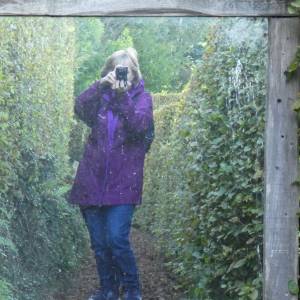Green Shank and Red Shank
The snow (Graupel or not) has disappeared and by this afternoon the weather was wild, wet and very cold. The late afternoon ferries are cancelled.
A good start this morning when a white tailed sea eagle headed for the bedroom window. Not quite but it circled the large conifer near the house followed by a hooded crow. John is suffering with the cold cough thing - hardly blaming me at all - and was still in bed. There was time to tell him to get up and look out and he agreed it was an eagle.
Later a quick trip to the shop before the rain or Graupel returned and a look at the loch on the way home. These two were wading around in the shallows when a bright orange flew in front of the camera. I found it and delighted to see a kingfisher! I don't think I have seen one on Mull. I only had the small lens and too distant a shot to show. Several locals passing by stopped for a chat and I learnt the kingfisher arrived 6 months ago.
It was a pleasure to watch the Green and Red Shank, again annoyed not to have the other lens. I hope the following info makes up for the image.
Green Shank. Tringa nebularia
A medium-sized slim wader with a dark grey back and white underparts. Its long green legs and slightly up-turned bill help to distinguish it from other waders. It calls regularly and is seen singly and in small groups. Confined to the N and W of Scotland in summer around boggy moorland and peatland pools.
Red Shank Tringa totanus
As its name suggests, redshanks' most distinctive features are their bright orange-red legs. They have a medium-length bill with an orange base to match, brown speckled back and wings and paler belly. They breed in damp places like saltmarshes, flood meadows and around lakes, but during winter you'll see lots more of them on estuaries and coastal lagoons. The greatest concentrations of breeding birds are in parts of Scotland and north-west England.

Comments
Sign in or get an account to comment.


